Eric Madeja: Coral Triangle
Nestled in the seam between the Pacific and Indian Oceans lies an immense archipelago. Some of its islands are mere sandy specks that disappear with every high tide, while others are much larger – among these are the second and third largest islands in the world. Deep sea basins, shallow continental shelves and warm, shallow waters support the largest concentration of coral reefs in the world, helping to make the Coral Triangle one of the greatest centers of biodiversity on Earth.
The exact origin of the term ‘Coral Triangle’ is unclear, but the first use in scientific literature came in 1994 in an early attempt to map coral reefs of the world using computer aided mapping techniques (McAllister et al., in Hoeksema, 2007). The usage of the term grew with time and was formalized in 2009 when the heads of state of Indonesia, Malaysia, Papua New Guinea, the Philippines, the Solomon Islands and Timor Leste signed an agreement at the World Oceans Conference in Manado, Indonesia, which became known as the Coral Triangle Initiative on Coral Reefs, Fisheries and Food Security.
It is home to 363 million people, 141 million of whom live within 30 km (19 miles) of a coral reef. It faces many threats, yet even though its habitats are fragile and show signs of breaking under the pressures exerted by humans, there is cause to hope. Governments, businesses and civil society both in the region and around the world are realizing the potential that they are losing, and working to stop the threats and reverse the degradation.
While there is little doubt that the Coral Triangle is the richest marine environment on the planet, the reasons for the richness are hotly debated. Is it because the richest taxonomic groups originated in the there and dispersed to the rest of the world? Or is it because of the overlap of flora and fauna from the West Pacific Ocean and Indian Ocean? As it turns out, the only thing that is clear is that the reasons for the area’s richness are complex and no single model explains it all.
It is a region of contrasts. You will come across stunning natural abundance and diversity but also widespread degradation of the environment. A quick domestic flight and boat ride will take you from extreme urban over crowding to some remote, sparsely populated islands. A lifetime is not enough to explore the many interesting stories, people and stunning landscapes of the Coral Triangle.
To learn more about the area, please visit “The Coral Triangle or to see more of Eric’s work, please visit his website.
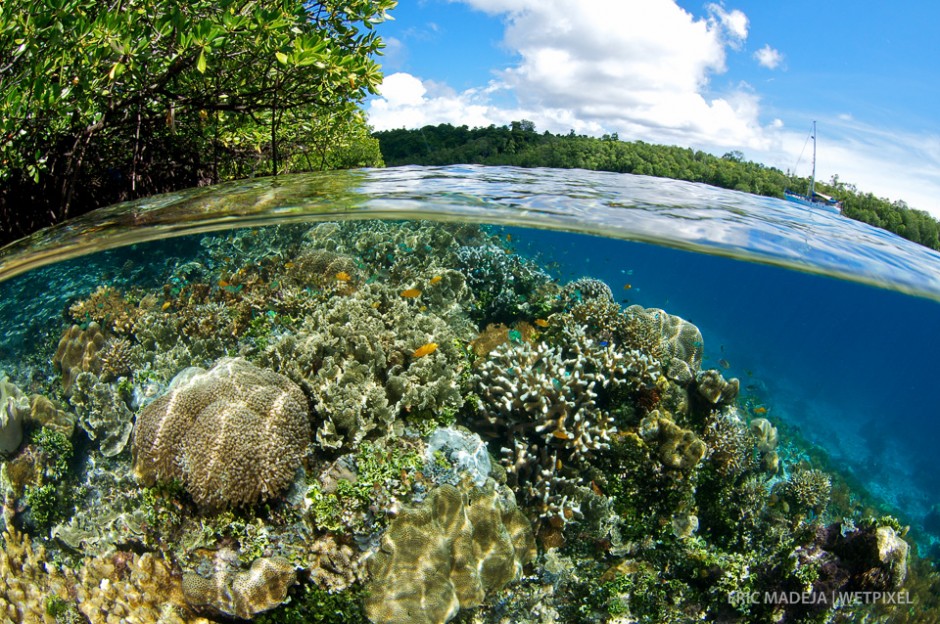
Nampele in Indonesa is a magical place where coral reef meets mangroves.
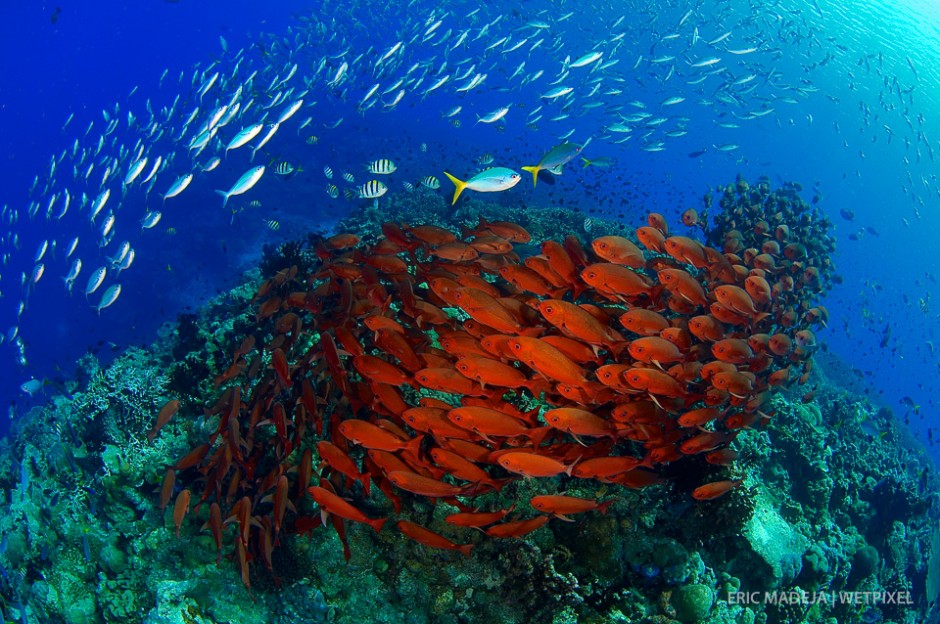
Many reefs in PNG are so remote that they are seldom visited by fishermen and you will find schooling fish in a abundance.
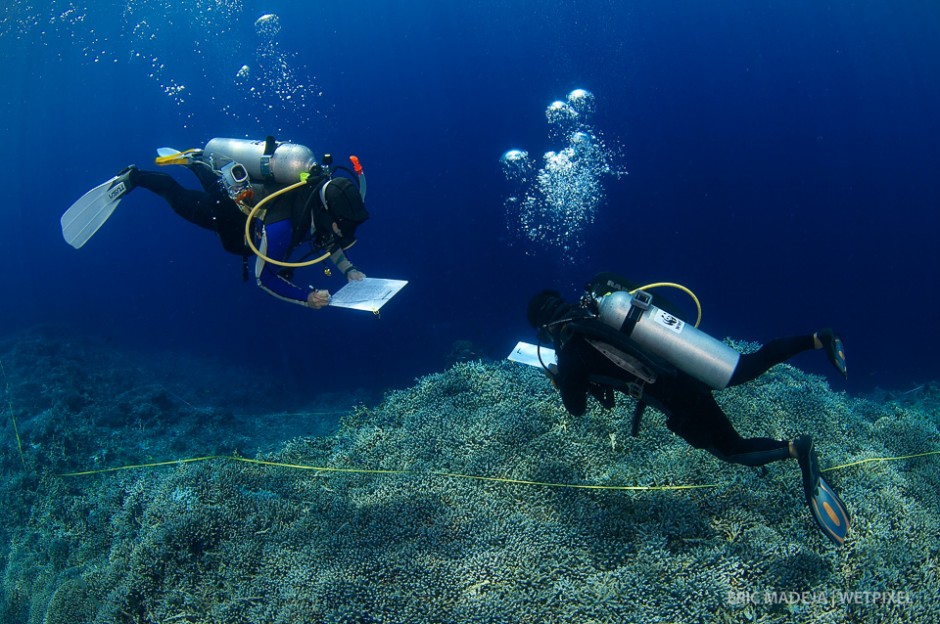
Looking every dive at corals only might not be everyones first choice. Tubbataha Management Office regularly monitors their reefs with the help of dedicated researchers.
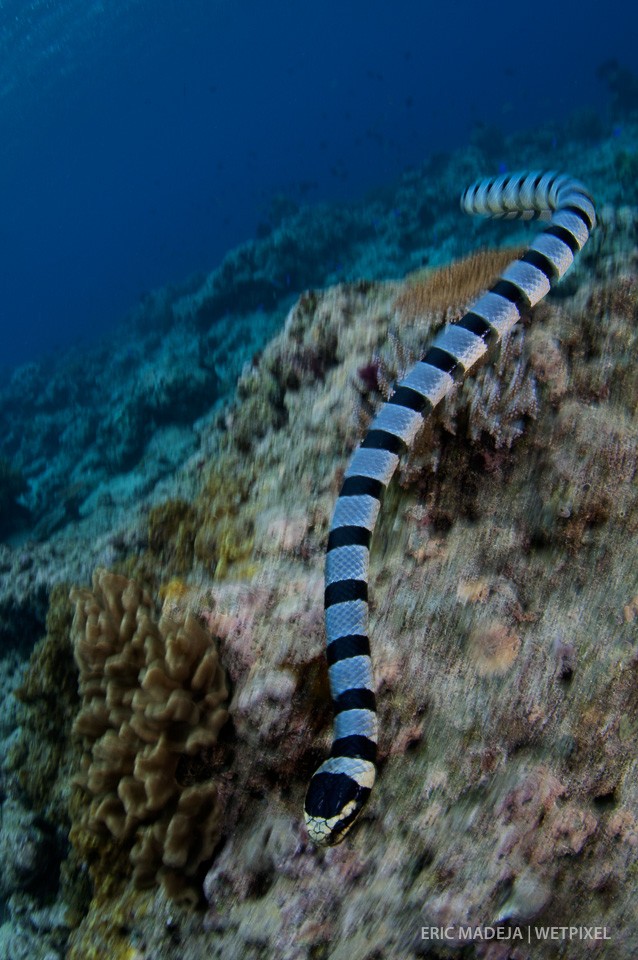
Banded Sea Krait (Laticauda colubrina) are commonly seen throughout the Coral Triangle.
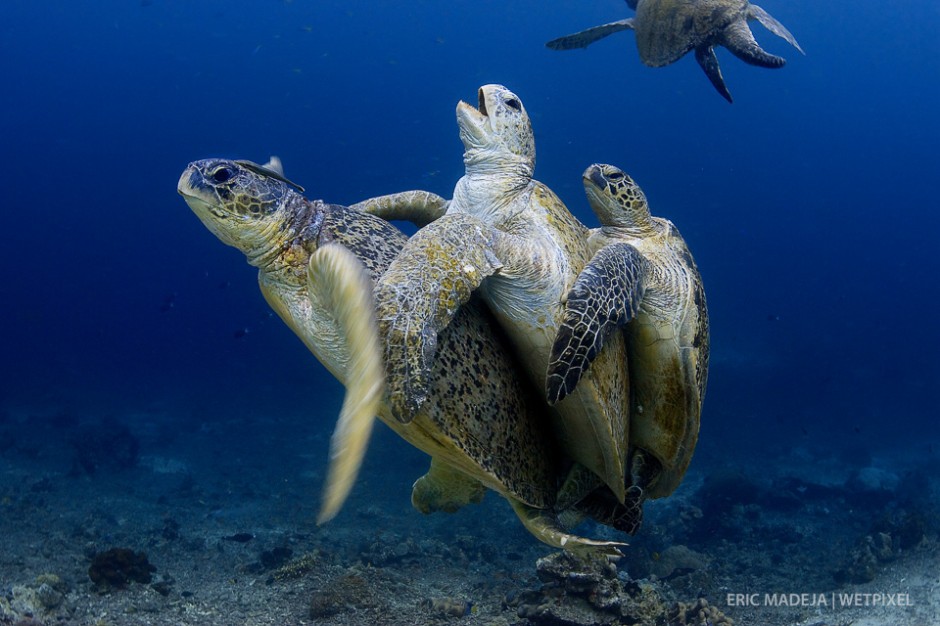
Male Green Turtles (Chelonia Mydas) do compete with other males for the best "spot" when it comes to mate with females.
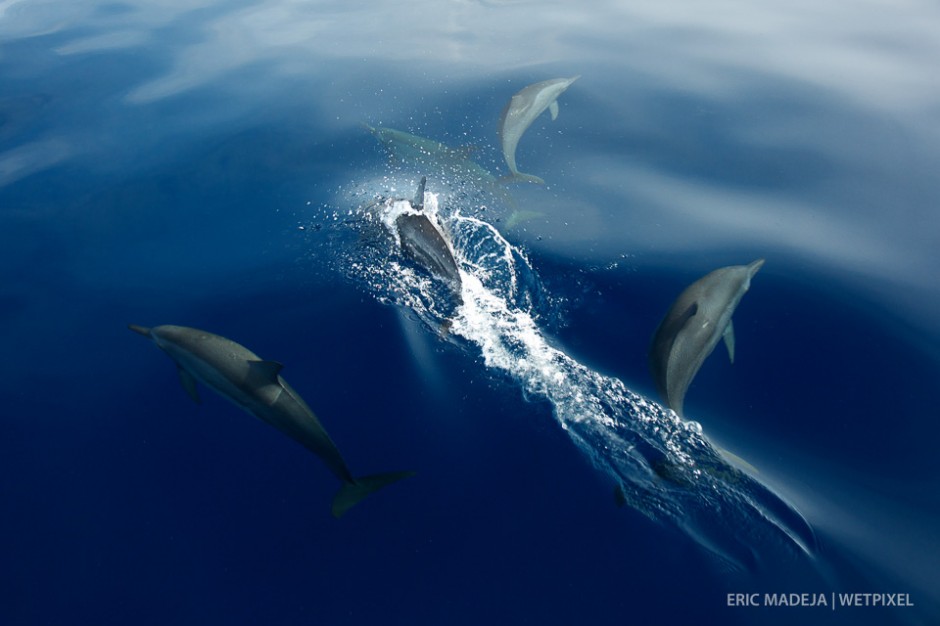
Large pods of dolphins can be found roaming the Solomon Islands. In certain areas they are traditionally hunted for their teeth.
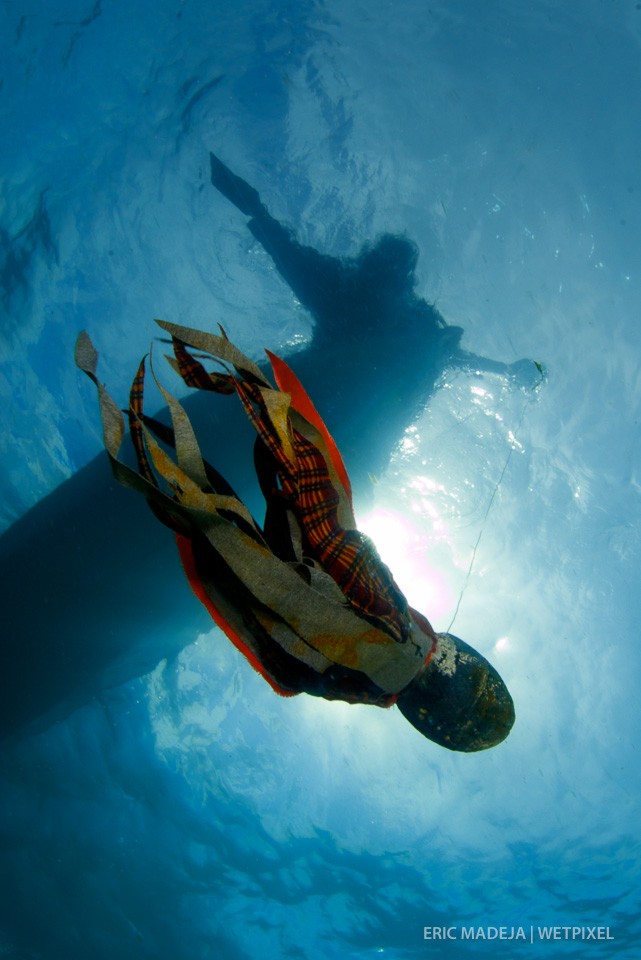
The Bajau Laut use homemade lures to catch octopus. The male thinks the lure is a female and comes out of hiding.

The seasonal baitfish occurrence at Lemnaka, West Papua plays an important role in the reefs ecology.
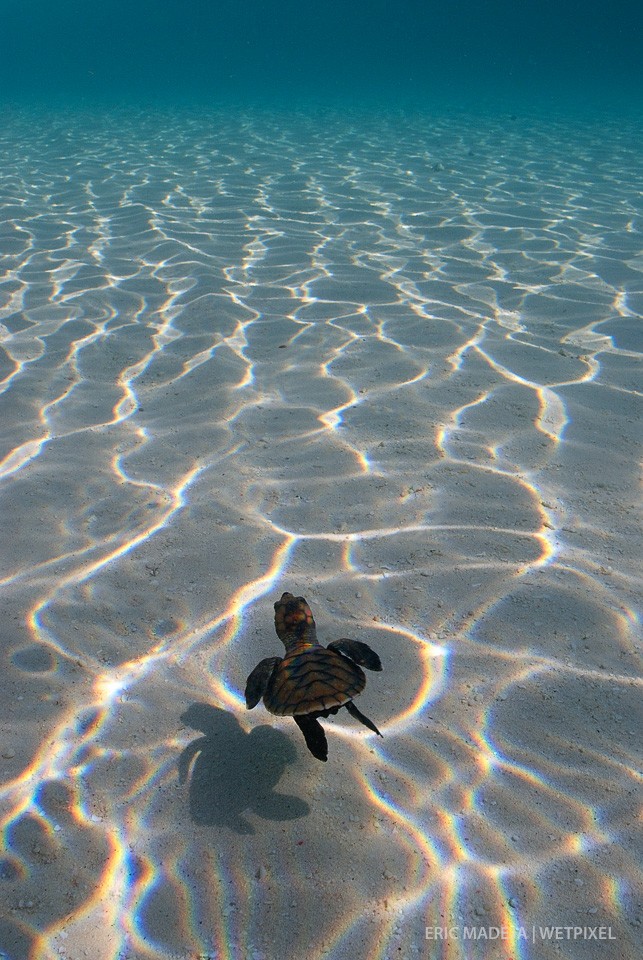
Newly hatched Hawsbill Turtle (Eretmochelys imbricata) heading towards the open sea and to what is known as the "lost years".
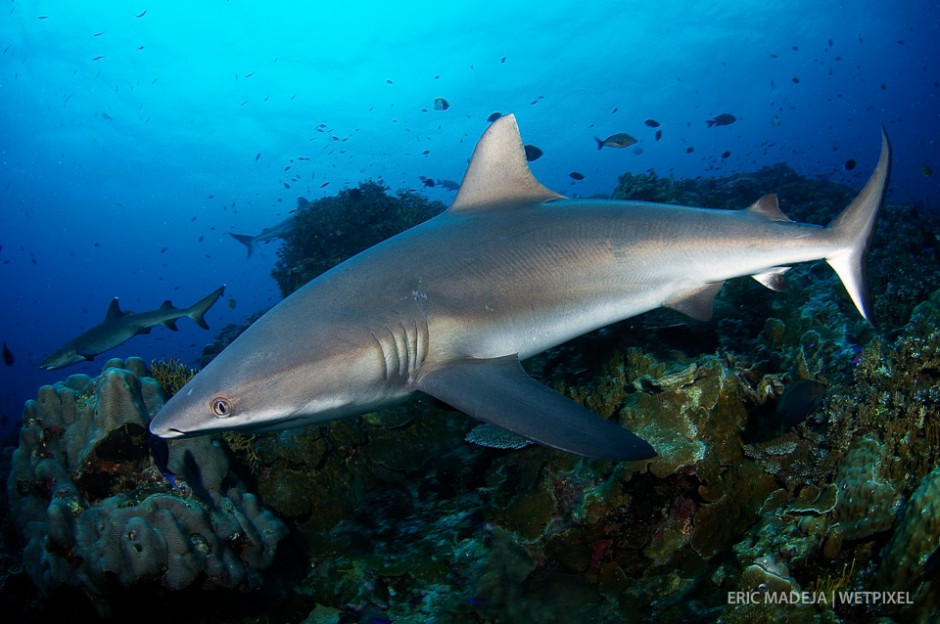
Within the Coral Triangle, sharks have been decimated to the point where you need to be considered lucky to encounter them while scuba diving. Fortunate there are still relatively pristine reefs in PNG, where sharks occur in numbers.
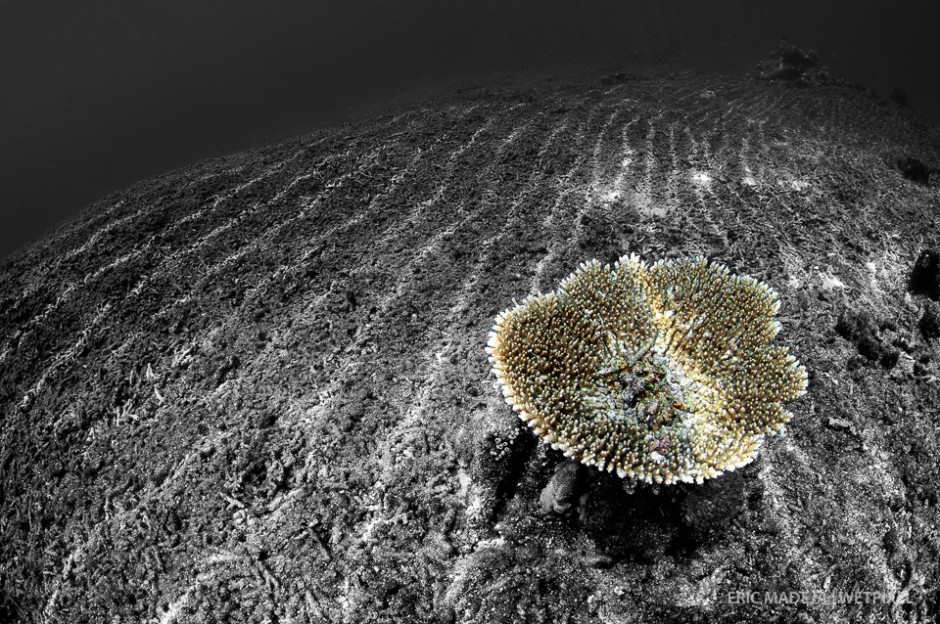
Blast fishing has been widely spread throughout South East Asia for decades, transforming large coral reefs into lifeless piles of rubble. The Coral Triangle countries working hard on eliminating this destructive practice.
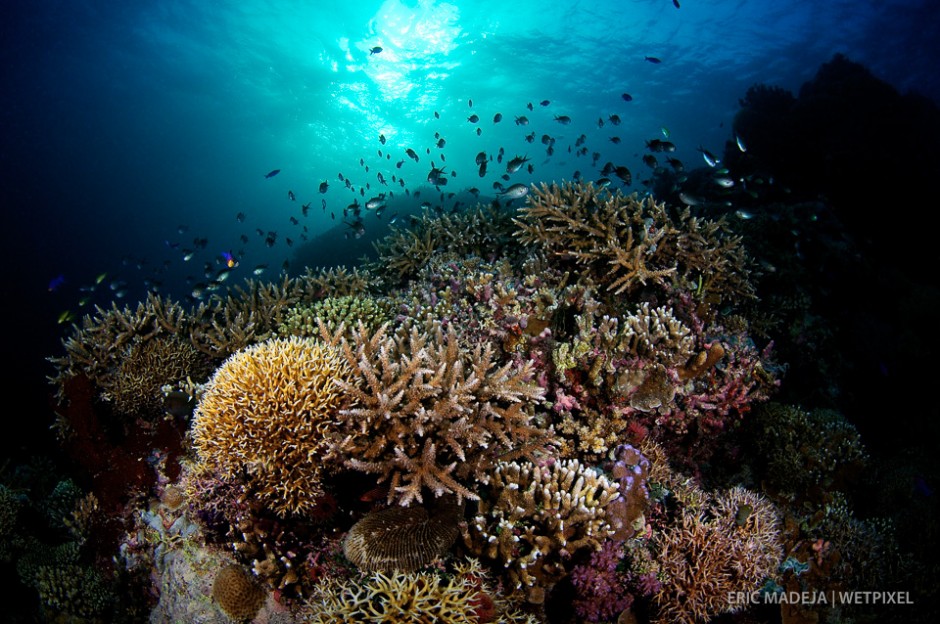
Even a very small corner of Tubbataha's reef can hold a large number of coral species and sustain many more associated lifeforms.

Schools of Yellow tail fusiliers (Caesio teres) so large you can't see the reef anymore.
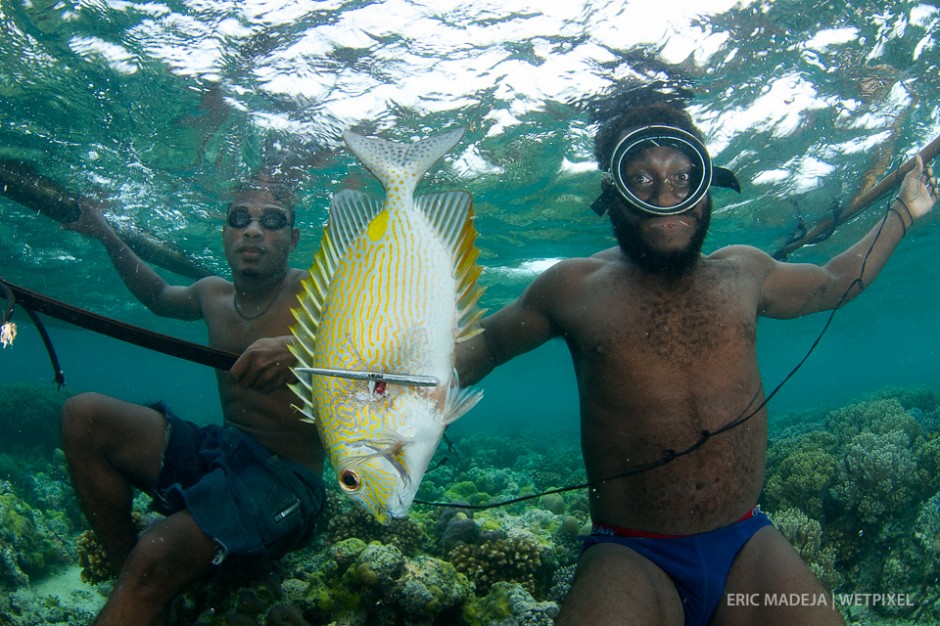
Spearfishing is one of the most practiced fishing methods by PNG's Island population.
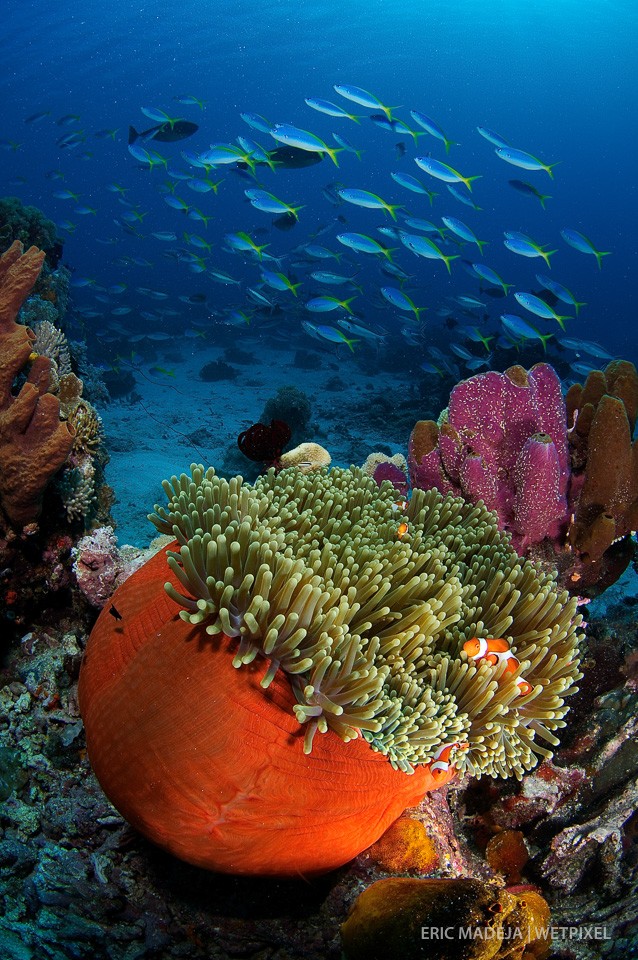
The vibrant reefs of Timor-Leste are relatively unknown. A lack of infrastructure is the reason that hardly any dive tourism exist in this relatively new country.
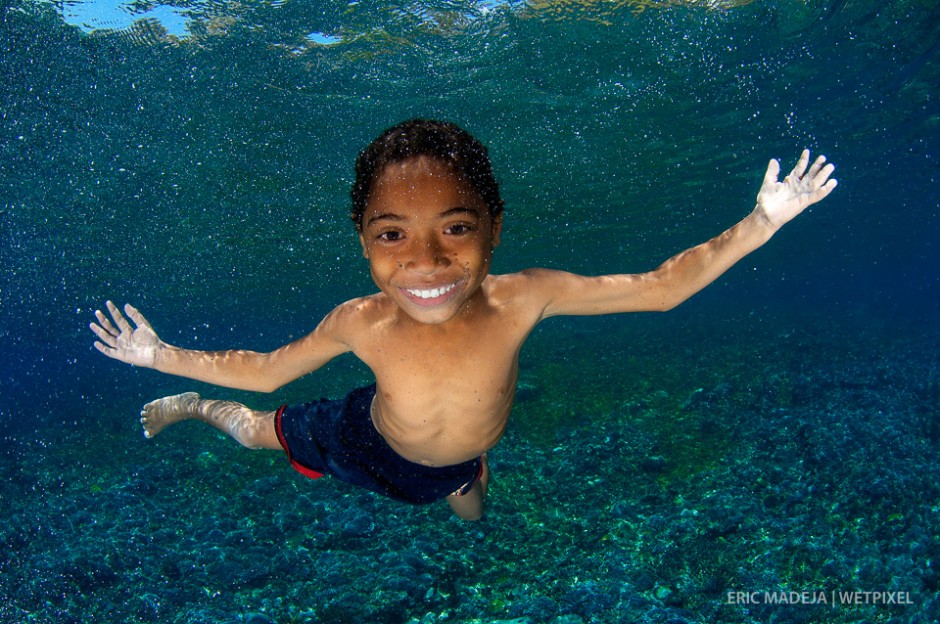
A young boy from Flores, Indonesia enjoying his own reflection in my cameras dome port. In the Coral Triangle, 141 million people live within 30km of a coral reef.

Jellyfish (Thysanostoma loriferum) riding the strong currents of the Indonesian throughflow (ITF) in choppy seas.
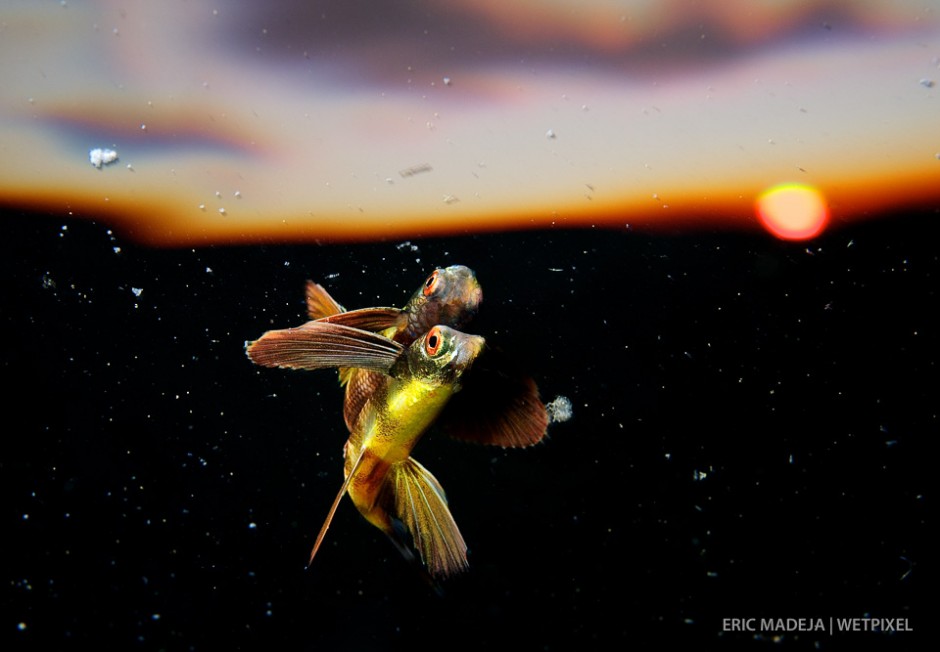
The Coral Triangle never fails to amaze - fish with wings and sunsets underwater. Juvenile flying fish (species uncertain) at dusk in the Sulu Sea.
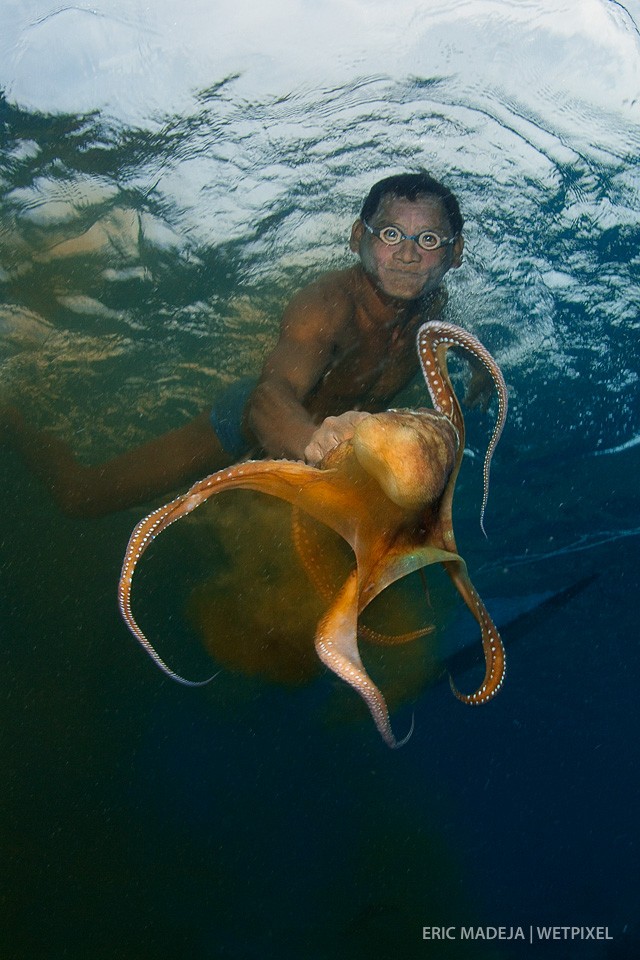
A Bajau Laut catching his dinner. The Bajau Laut are nomadic people living on boats, roaming the islands and reef between Borneo, Sulawesi and Mindanao.

Caged coral trouts (Plectropomus leopardus) are fed until they reach a certain size ready to be shipped to a "Live Seafood Restaurant". Their deep red skin colour and flaky flesh makes them a priced food fish in the Chinese cuisine.